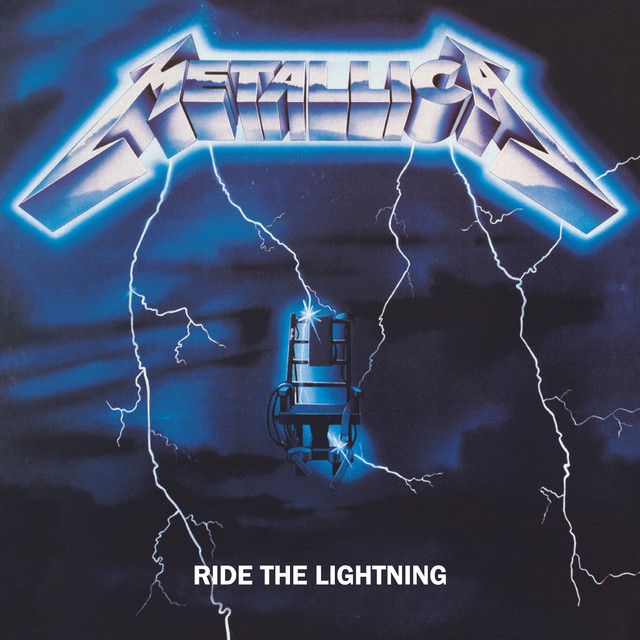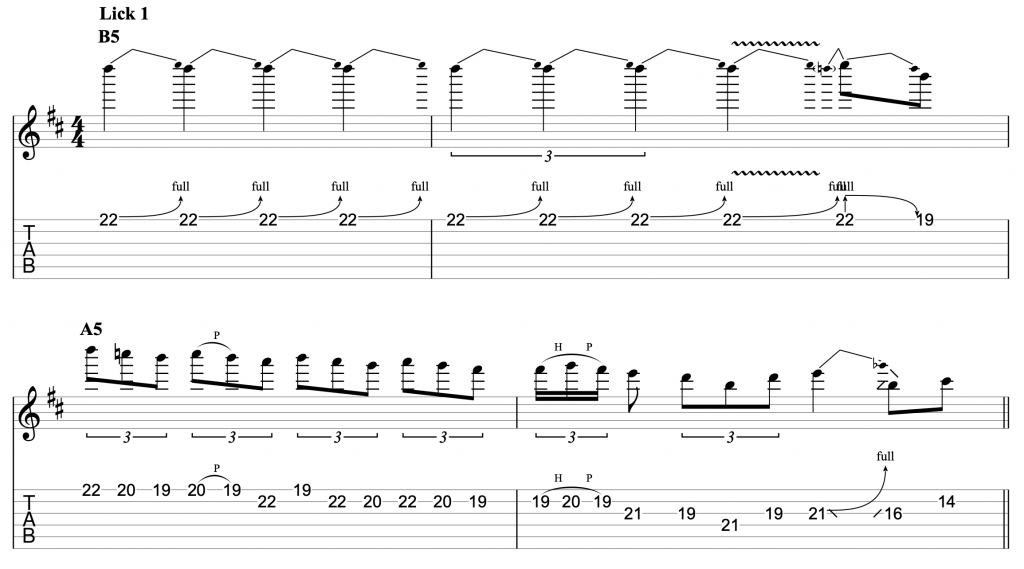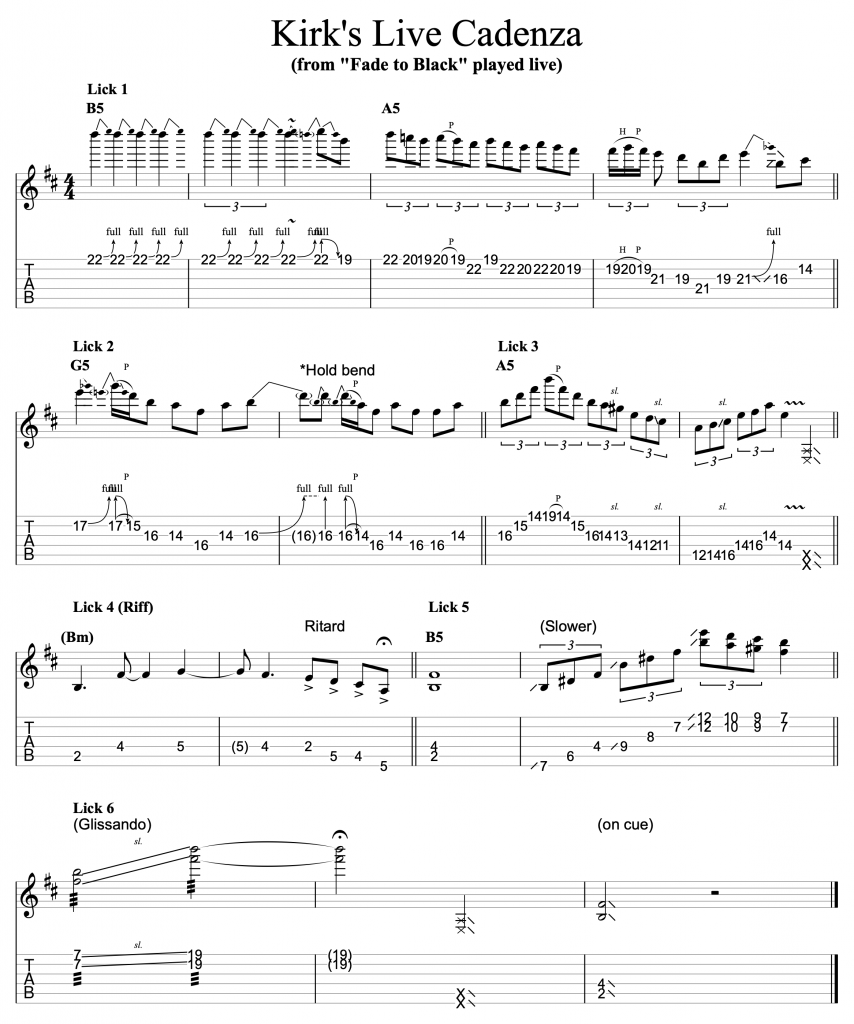For the longest time, I’ve wanted to sit down and learn Kirk’s cadenza at the end of Metallica’s live performances of “Fade to Black.” I didn’t see any lessons on this anywhere else, so I thought I’d offer a lick by lick breakdown.

His performances do vary a little bit from show to show and over the years, but for the most part, Kirk plays the same thing consistently. His cadenza isn’t necessarily the craziest or hardest thing to play, but it is it’s own composition within the composition, which is something that Kirk Hammett excels achieving with his solos. A song can be a living, evolving thing, and when Metallica plays “Fade to Black,” they always include this cadenza.
I’ve broken down Kirk’s cadenza into six licks and provided a breakdown of each. You can also skip to the bottom to see a full transcription. You can see a full speed playthrough as well as lick by lick breakdown here…
Lick 1 starts off with a high bend from the D to an E repeated followed by a B Phrygian sequence and B Minor Pentatonic lick.

Lick 2 has Hammett playing in a B minor pentatonic add9 pattern over the G, but he bends from the root note B to a C#, which is a dramatic #11 over the G5. He may also be thinking of F# Minor Pentatonic in the 2nd measure here.

Lick 3 starts with a Bm sweep arpeggio followed by using notes from the A Major scale (notice the G# in beat 3) descending then finishing with an ascending A Major Pentatonic lick.

Lick 4 is simply the backing solo riff played with the band. They slow down and hit each of those accents (>) together. Notice the fermata on the last note, too. Listen to this section of live recording of “Fade to Black,” and you’ll get the idea.

Lick 5 is considerably slower as the band is holding out the B5 chord. Hammett ascends a B Major arpeggio played in two 8ves before sliding with 4ths back down to a B5 sound on the top two strings.

Lick 6 finishes the cadenza by tremolo picking while playing a slow glissando (a continuous slide upwards) to the same notes an 8ve higher before doing a slide down to the final power chord.

Here is a full transcription of Kirk’s Live Cadenza from “Fade to Black.”

Thanks for checking out this lesson! Have fun learning it, and if you post a cover, let me know. Keep shredding and woodshedding!

